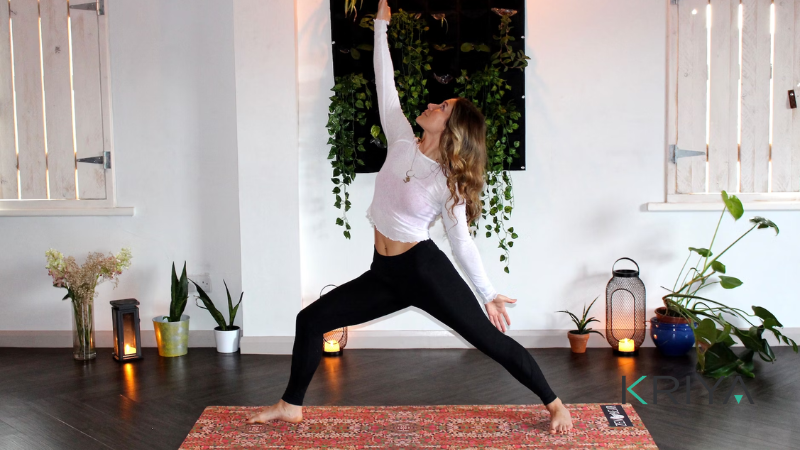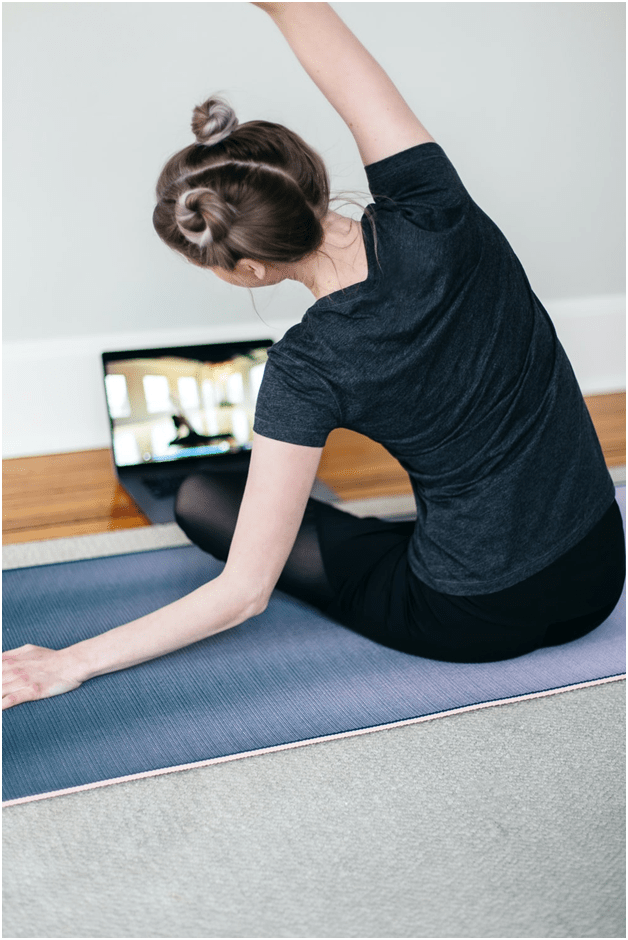
How Much Should You Charge for Online Yoga Classes in Australia? (2025 Guide)
Many yoga instructors are taking online classes, and there are no set standard rates for these classes. Often, the rates of an online yoga class vary from instructor to instructor, studio to studio, and the type of yoga being taught. This confuses the students, and they start looking for online yoga classes that fit their budget.
During the peak of the COVID-19 pandemic, many yoga students shifted to online learning out of necessity. Now that in-person classes have returned, some still prefer the studio environment for hands-on guidance, while others have embraced the convenience of practising yoga from home.
Below are a few factors that will help you determine how much to charge for an online yoga class:
1. Are you taking a group class or a single class?
If you’re teaching in-person group classes through a studio in Australia, the standard teacher pay ranges from $65 to $85 per class. For private in-person sessions, you can typically charge between $100 and $160 AUD per hour, depending on experience and location.
For online classes, rates are usually lower. Group classes may be priced at $10 to $25 per student, or offered as part of a monthly membership ($20 to $60). For private online sessions, many teachers charge between $60 and $120 AUD per hour, depending on the level of personalisation and service.
There are several different types of yoga that you can teach online. Some of the most popular types of yoga include:
- Hot Yoga
- Vinyasa
- Power
- Ashtanga
- Kundalini
- Iyengar
While the cost of the different types of yoga lessons is usually similar, it can sometimes vary depending on your experience and expertise.
2. What will be the duration of your yoga class?
A standard yoga class lasts an hour. Average Yoga Class Price List
| Yoga Class Length | Average Cost |
| 30 minutes | $45 – $65 |
| 45 minutes | $60 – $80 |
| 60 minutes | $65 – $85 |
Set the price according to the yoga class length
3. What is your experience in Yoga?
Most experienced yoga instructors charge more. Prices are also higher in capital cities than in country towns. Many yoga teachers, particularly those fresh out of Yoga Teacher Training, are inclined to charge as low as $55 or $60 per hour of instruction. Many times, they even offer free classes as a way to gain more teaching experience and build their credentials.
The prices you charge should be based on the understanding that you are sharing something of value with your yoga students rather than an arbitrary numerical value you attach to your time.
Other teachers price their classes similarly to other wellness practitioners, such as Reiki healers, acupuncturists, and reflexologists, in their area. In contrast, others match their prices to those of personal trainers or gym coaches.
4. Find out what others are charging.
It’s a better idea to explore and compare prices at other yoga studios or fitness classes to find out what they charge online. Pricing your online sessions at a similar or comparable rate will set a standard of cost for each online yoga class.

Many students opt for free classes online via YouTube channels or subscribe to some apps and download free ones. While free videos are abundant online, live or personalised yoga instruction offers accountability, feedback, progression, and connection—benefits that pre-recorded content cannot match. Teaching online also requires planning, setup, technical tools, and marketing—all of which factor into fair pricing.
One should consider the hidden and invisible costs of teaching yoga online.
Teaching an online yoga class requires a lot of work. Planning the lesson sequence and cues, though, is the same as in a yoga studio. However, to attract students to your online yoga classes, you need to set up an online yoga studio, create a website, or establish a booking system.
Additionally, you take marketing classes and prepare in advance by assembling your laptops, cameras, lighting, mats, and other necessary items to stream online, in addition to ensuring internet access and paying the electricity bill.
How much should I charge for an online yoga class?

It all depends on you personally as a yoga teacher. You must consider all the above factors, such as your time, effort, experience, and the content you are teaching, and then decide on a rate that earns you a modest profit for sustaining your yoga profession. You should be comfortable with that amount and feel that what you are charging is not beyond the means of an ordinary student.
Your pricing should reflect the value and experience you offer, while staying accessible for your ideal students. A fair rate allows you to sustain your teaching, support your community, and grow your business.
In any business, especially one with many competitors, many teachers offer low prices to attract students to their business. However, this is not necessarily true. People tend to associate price with value and often use price as a gauge of quality. Low prices may signal to potential students a lack of expertise or value, or a teacher who isn’t experienced or specialised.
- The average cost of yoga lessons in the UK ranges from approximately £10 to £30; however, this is an average, and prices may vary. Many yoga teachers also offer the option of purchasing a package of yoga lessons at a discounted rate.
- The average cost of yoga in Australia ranges between $20 and $35.
Undercutting your rates to compete on price may harm the industry long-term. It can lead students to undervalue yoga instruction and expect unsustainably low prices from all teachers.
People see yoga services as devalued when other yoga teachers offer classes for $5 or $10 per lesson, and they come to expect similar prices from all yoga teachers.
You can join the Facebook community of yoga teachers or any yoga discussion group to find out how much you should charge for your online yoga class and how to structure packages online.
What is the most effective way to increase online student enrollment?

The best option to attract more students online is to offer subscription-based yoga classes or a weekly or monthly package. Many yoga teachers offer free YouTube channels and free trial periods to attract students to their online classes.
Additionally, consider the type of yoga you want to teach. For people new to yoga, following a daily structured program can sometimes make committing to a practice a whole lot easier. Many instructors offer comprehensive programs that allow students to progress through a series of classes that become progressively more challenging, which attracts students.
Find here how to increase class attendance.
You can include yoga poses, meditation, or pranayama lessons, and all three of these components challenge the students physically and spiritually. Classes can range in length from 10 minutes to over two hours, with a variety of styles offered, including Hatha, Vinyasa, Ashtanga, and Kundalini, among others.

Consider recommending or selling yoga props such as blocks, bolsters, or straps to enhance your students’ experience. You could even partner with an online store to earn affiliate income or promote your favourite gear through your website or classes.
Teachers also love to teach how to incorporate props such as a yoga block, bolster, straps, or blankets to make the practice safer. Most courses will require a yoga mat, but many also encourage the use of props, such as yoga blocks, straps, or blankets, to help modify movements or teach a restorative style of yoga. For these tools, you can provide an online store description or partner with a store to generate additional revenue for your business.
New students who have never practised yoga can begin with a beginner flow sequence, regardless of their fitness level. This will enable them to learn the fundamental principles and cues that you, as an instructor, will utilise at higher levels. A skilled instructor can offer modifications and alternatives to certain poses.
Online yoga classes with a paid subscription should cost roughly $10 and $30 per month. Live studio classes typically cost between $25 and $35 per class, depending on the location, brand, and the instructor’s experience.
In this manner, it benefits students who opt to purchase a multiple-course pack, as it can significantly reduce their cost, provided they like your class and are hooked on it. You can also check with the local community or talk with your neighbourhood yoga teacher about how much they charge for an online yoga class.
In the end, the decision is yours—choose a rate that reflects your skills, effort, and the value you bring.
Pricing your online classes is personal—but by aligning your rates with your experience, setup, and service, you’ll build a sustainable business that respects your time and your students’ commitment. Trust your value, and price with confidence.
See also
Your Guide to Stream Yoga Classes Online – Zoom vs Skype vs YouTube Live vs Facebook Live
5 Ways to Offer More Professional Online Classes as a Yoga Teacher
